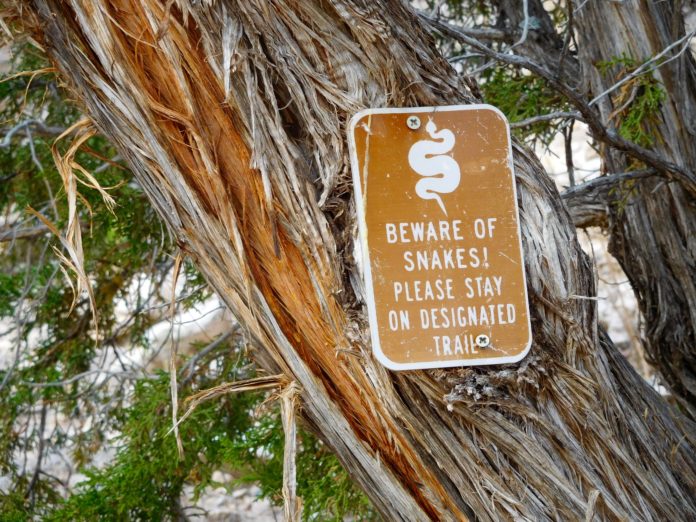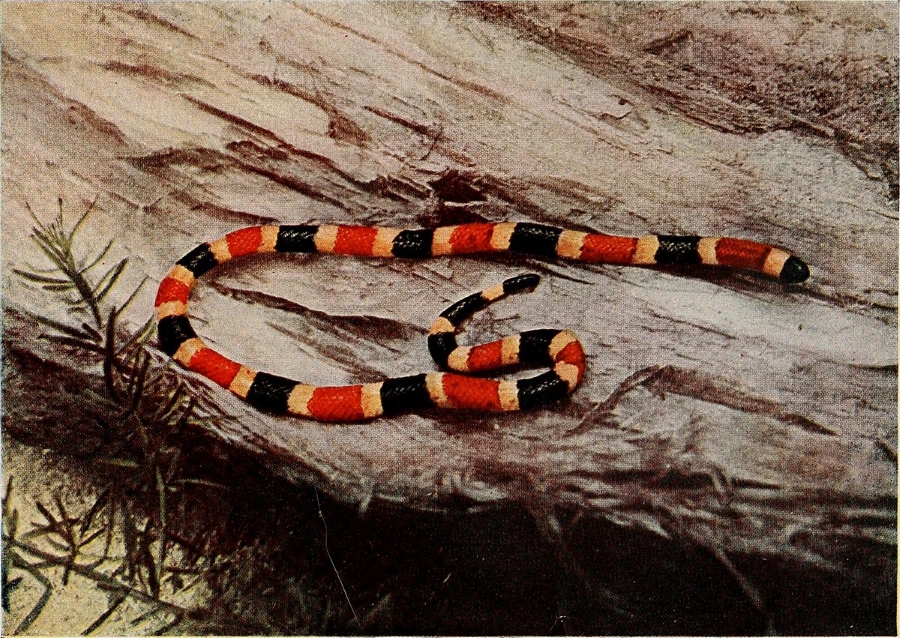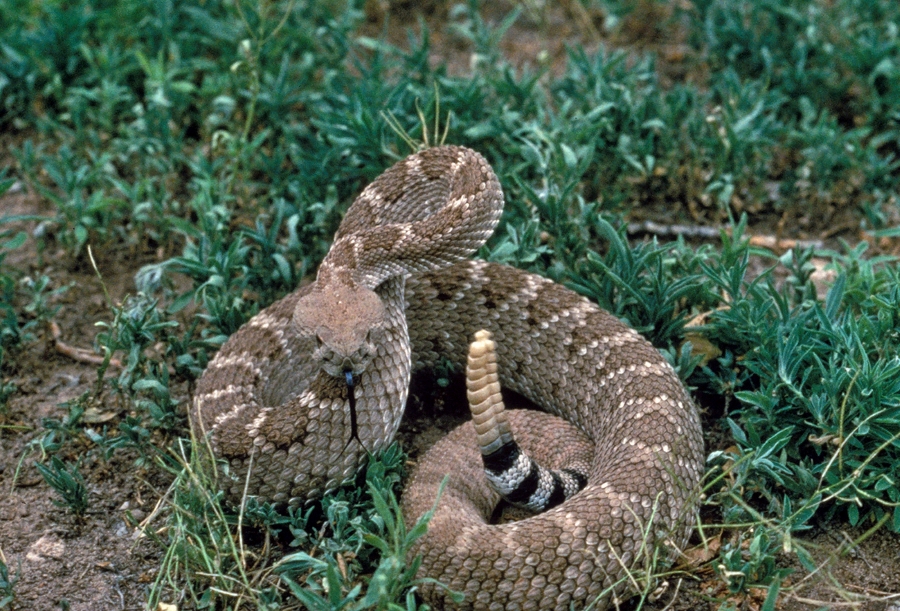Venomous snakes and dog safety

When hiking with your dog, knowing what kind of venomous snakes you may encounter might make all the difference.
Despite the joy we find on a vigorous trail hike, a slithering surprise underfoot will send many of us straight back to the trailhead. Even the most experienced trail runner can be scared stiff by an encounter with a potentially venomous snake. Your dog, on the other hand, may be curious and decide it’s time to play, and that’s when the slithering creatures become dangerous.
Snakes are generally as afraid of us as we are of them, but your pup doesn’t share that fear, and curiosity can kill the dog. In fact, dogs are 25% more likely to die from a rattlesnake bite than their human companions. Knowing the species can help you stay calm when you run across the harmless ones. Here’s a catalog of common snakes you and your pooch might encounter hiking in the U.S.
Venomous versus non-venomous trail snakes
 The reality is most snakes you see on the trail run are harmless. The difference in head shape is the easiest way to differentiate between lethal and harmless snakes. Venomous snakes have triangular heads and slit-shaped eyes, while nonvenomous ones have rounded heads and eyes. Your dog is more likely to get sick from eating foxtail barley on the trail than he is from meeting up with one of these.
The reality is most snakes you see on the trail run are harmless. The difference in head shape is the easiest way to differentiate between lethal and harmless snakes. Venomous snakes have triangular heads and slit-shaped eyes, while nonvenomous ones have rounded heads and eyes. Your dog is more likely to get sick from eating foxtail barley on the trail than he is from meeting up with one of these.
Common non-venomous snakes
Corn snakes

A type of rat snake, corn snakes have pale bodies overlaid with rusty brown or orange patterns, making it easy to mistake them for venomous copperheads. Unlike copperheads, corn snakes are brighter and lack the bright yellow tail of juvenile copperheads.
Garter snakes

Among the most common snakes in the U.S., garter snakes are easy to identify by their side stripes, which run from their ears all the way to their tails. You’ll typically spot them in gardens, but dogs often run across them while munching on grass in the wild. Neither the snake nor grazing will hurt your dog.
Kingsnakes

There are dozens of varieties of kingsnakes living in a wide range of habitats. Scarlet kingsnakes are easy to mistake for coral snakes, but coral snakes have red and yellow rings that touch, and kingsnakes do not. People who grew up in the Southeast, where coral snakes are endemic, learn the difference through the saying, “Red and yellow kill a fellow. Red and black, friend of Jack.”
Rat snakes

Quite common and also large, rat snakes are sometimes mistaken for rattlesnakes on account of their sheer size and scale patterns. The telltale characteristic of the harmless rat snake is their round heads and eyes. These are actually beneficial to have around since they keep yards free of rodents.
Common venomous snakes
Coral snakes

These visually striking snakes have a striped pattern of black, and yellow and red connecting bands. Found in drier areas, the bright colors of coral snakes make them hard to miss. It also makes them hard for dogs to resist. If a coral snake bites your dog, carry him to the trailhead and get him to a vet as soon as possible. The snake injects a deadly toxin that can paralyze your pup within 18 hours.
Copperheads

Copperheads are hard to see because they’re well camouflaged in leaves, which is their preferred habitat. They have stout bodies and a tapered tail as well as a distinctly triangular head.
Cottonmouths

Solid brown or deep gold with brown crossbands, young cottonmouths have bright yellow tail tips. These snakes are almost always found near water, and contrary to the well-circulated myth, they will not chase you. Step on one, and it may bite, and that can be serious, though rarely life-threatening.
Rattlesnakes

Perhaps the most famous of all venomous snakes in America, rattlesnakes are also fairly easy to identify by their diamond coloring and rattle. In a classic defensive position, a rattlesnake will raise its head above a coiled body and rattling tail. Baby rattlesnakes do not have rattles, making identification more difficult. But contrary to another myth, their venom is not more potent.
Snake spotting tips
In warmer months, you’ll often see snakes basking in the sun on rocks, pathways, or other areas. But you’re more likely to encounter snakes in places where you see logs, rocky ledges, and craggy areas with crevices. It’s important to remember that snakes aren’t aggressive and are as wary of you as you are of them. Staying on the trail will help ensure that you don’t startle a snake and that they don’t startle you.
Keep a leash, or at least your eyes on your dog at all times. If you see him holding his tail high and wagging it, a snake may have caught his attention. If you encounter a snake in a defensive position, chances are you frightened it. You should either allow it to pass or cut it a wide berth and run past it. Snake encounters on trails are rare, and bites are even more uncommon. And remember, snakes don’t just inhabit mountain terrain. You’ll find plenty of snakes on the plains.




